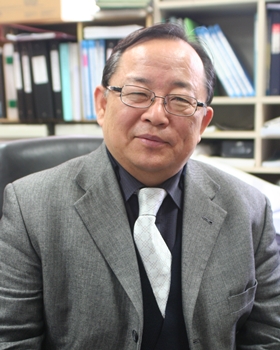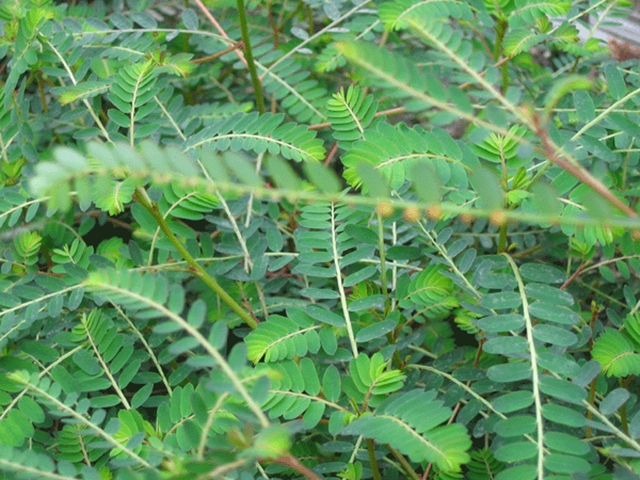'Hepatitis B Treatment' with Indigenous Natural Plant Developed
Lee YouKyoung 2011-10-04 View. 22,455

Liver disease is the biggest cause of death among people in their 40s and the third-biggest cause among those in their 30s. Hepatitis B infection is a major cause of chronic liver disease, with the virus isolated in 73 percent of patients with chronic hepatitis and cirrhosis, and 77 percent of patients with primary liver cancer.
KRIBB Dr. Lee Young-ik seeks 'zero' mutation by utilizing indigenous natural plant.
Likewise, patients infected with hepatitis B, if left untreated, are effectively constantly exposed to the risk of developing liver cancer, which is caused by the virus. Many anti viral drugs, including lamivudin and interferon, which are commonly used to treat hepatitis B, are widely available in the market.
Interferon temporarily increases immunity, while Lamivdin suppresses the activity of DNA polymerase, and curbs its reproduction, resulting in temporary efficacy of treatment.
However, when used for a long period of time, this drug allows for the mutation of hepatitis B virus, rendering it resistant to the treatment, while e-antibody continues to be excreted. As a result, a high portion of hepatitis infection progresses into Liver cirrhosis and liver cancer.
For this reason, doctors have had to take the trouble of prescribing alternative treatments to patients, coincidently with the emergence of the mutated virus. Dr. Lee Young-ik at the Korea Institute of Bioscience and Biotechnology(Park Young-hoon, President) developed a treatment that suppresses the cause that triggers different mutations to address the problem.
At the start of his research, Dr. Lee set the goal of developing a drug for suppressing the emergence of the mutated virus at the time of the secretion of e-antibodies, the integration of hepatitis B virus and liver cancer, and the reproduction of Polymerase, while retaining the efficacy of conventional treatment.
In order to develop a new drug, Lee's team first searched for a material that has a suppressing effect. His effort to develop hepatitis B treatment saw no gain through genetic methods or chemical approaches that he had researched previously.
Subsequently, learning by change that certain indigenous plants have efficacy, he began research using such plants in earnest with support from the New Frontier R&D Program Plant Diversity Research Center(Joung Hyouk, Director) from 2006.
Dr. Lee singled out 135 plant species, which had been used in treating liver disease since ancient times, from the plant extract bank of the New Frontier R&D Program Plant Diversity Research Center. Of these, he singled out eight plant species that were found to directly remove the hepatitis virus, and finally selected on three indigenous plants, including Phyllanthus Urinaria Koreana.
He then extracted virus-suppressing substances from the indigenous plants, developed a treatment and conducted animal tests. The substance effectively lowered the portion of mutations, which stood at as high as 10^6/1 to 10^18/1, which is far superior to conventional treatment.
"The most important thing in the development of the treatment is the fact that we have developed substances that suppress mutations at different points in time from the three indigenous plants. Based on these substances, we have developed treatments whose operational mechanisms are completely different from those of conventional anti-viral drugs."
His study is currently undergoing tests for safety and efficacy. In particular, noting that the hepatic B virus in pregnant women can be transmitted to the fetus, he injected the new treatment into cubs given birth by animals with the virus, and is conducting experiments to determine how the treatment affects the cubs with the virus.
Dr. Lee said, "Considering the results of efficacy tests and the development process thus far, we anticipate positive findings from the safety evaluation process," adding, "When we finish animal tests, we will begin a process for the treatment's commercialization in earnest in accordance with the rules and regulation of the Korea Food and Drug Administration."
Dr. Lee, who has researched viruses for more than 20 years, aims to develop treatments for Cirrhosis and liver cancer, on top of treatments for hepatitis B.
"Since the liver is a central organ of humans, I would like to concurrently study metabolic diseases as well. Just as we were able to generate promising research with support from the New Frontier R&D Program Plant Diversity Research Center, I hope that well-organized research support programs with similar purposes can provide ample assistance to researchers."
Kim Hee-jin
[April 26, 2010]
- - - - - - -
Source - HelloDD.com

 Delete Article!
Delete Article!